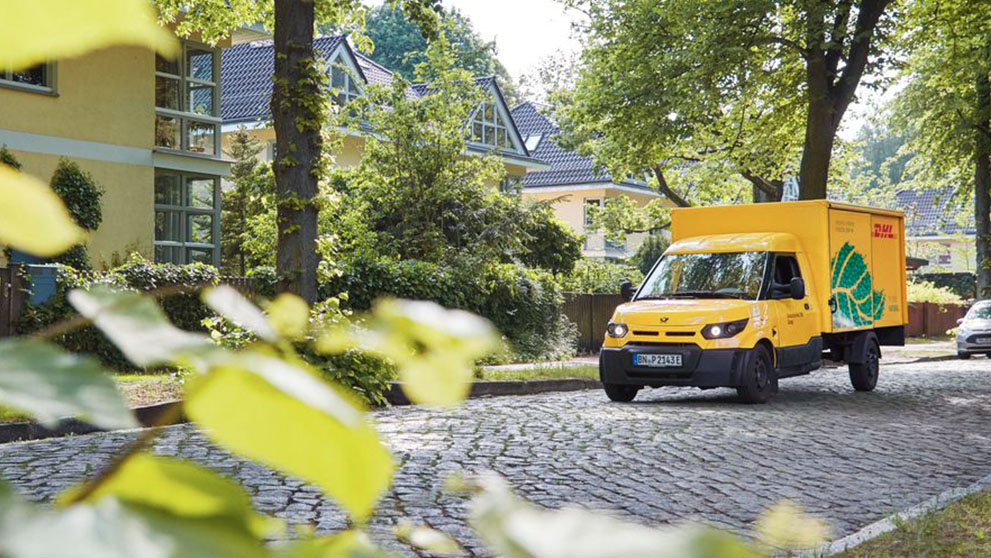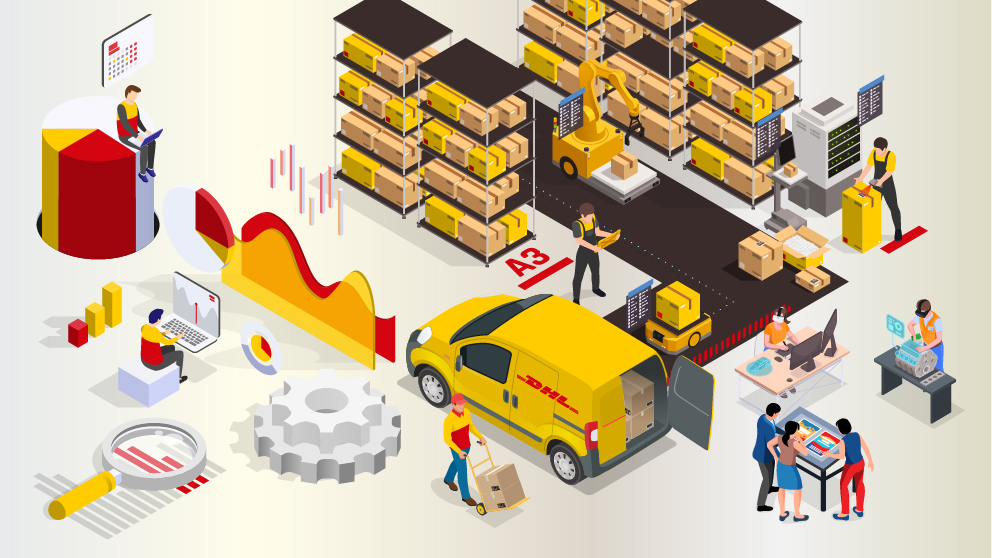Looking to grow your e-commerce business? then selling internationally might be right for you. These are the challenges you may face - and how to overcome them.
Thanks to the advent of international shipping, it has never been easier for online businesses to open their (digital) store doors to the world. And the good news is, there’s a hungry market of global consumers out there, looking to try and buy from foreign brands.
Recent research found that 57% of online shoppers made at least one purchase from a company based in another country in 20211, whilst this year, cross-border e-commerce is set to take a 22% share of total e-commerce sales worldwide – up from 15% in 20162.
But – before you rush to put a big “We ship internationally” banner on your website, it’s important to consider some of the barriers to international trade. For example, there are international shipping challenges to address first if your business – and your customers – are to have a seamless experience. In a vast and diverse world featuring multiple languages and cultural nuances, you are almost certain to encounter some difficulties.
Figuring out how to sell internationally is a challenge, but being aware of the common pitfalls and taking the right steps to overcome them is key to your business' success. Read on…
1. Selling on the wrong platform
Just as choosing the right location is critical for a bricks and mortar store, so is selecting the best international e-commerce platform for your developing business. An older legacy system, particularly one that was custom-built for you when you were just starting out, may seriously handicap your potential for growth. As you expand into new markets and territories, you may find that problems with your platform start to mount up. It may struggle to cope with multiple currencies, require more and more third-party apps to provide basic functions, or be incapable of working with advanced technologies like chatbots or artificial intelligence.
What you can do
Be prepared to do your homework. The e-commerce platform market is a crowded one, and names like Shopify, Magento, BigCommerce and WooCommerce are just some of the players. Write a list of the “must-have” features of your e-commerce platform – such as customisation, flexibility, scalability and of course price – to help you filter the ones most suitable for your needs.
Consider an online marketplace. Some countries have complex regulations for overseas merchants wishing to sell to consumers there. That’s where selling on a marketplace can be beneficial. China’s Tmall Global, for example, is specifically set up for foreign brands – you don’t have to have a physical entity in China or a Chinese business license to sell on the platform, and you can accept payment in your local currency. Just be wary of the fees each platform charges.
2. Choosing the wrong markets
There are over 220 countries out there to choose from, but not all will be right for your business. Rushing ahead and expanding too quickly could be a costly mistake – before you know it, you’ve invested in localizing your website for a market that really has no interest in the product you’re selling.
What you can do
Research, research, research. Find out the leading e-commerce product categories in the country you’d like to sell to (not hard with Google). Look at some of the biggest online retailers in the country too – what are they selling? At what price point? How do they market themselves on social media? You should also check out some of your competitors and what countries they sell to – after all, if they’re selling there, it’s because there’s demand.
3. Not understanding your target market
Unfortunately, your tried-and-tested domestic sales strategy can’t just be “copy and pasted” for all international markets. Consumer shopping behaviors vary vastly between countries – a shopper in Italy is not going to have the same expectations and preferences as one in India. If your e-commerce website is not tailored per market, you will miss lots of sales opportunities.
Customisation means more than just translating your site into the local language. Consider too: do consumers there prefer online shopping via an e-commerce website or mobile shopping app? Can your business accommodate that? How about where to market to prospects – which social media platforms are most popular? Or do consumers prefer communication via messenger apps? There are also many trends you may not be aware of – in China, for example, live streaming is a central part of online sales. If you don’t know these things, how can you optimise your sales strategy?
What you can do
Think globally, market locally. You may have big international ambitions for your e-commerce business, but you still need to treat each target country as an individual entity with its own shopping behaviors and preferences.
DHL’s exclusive – and free – country guides have all the insights you need to successfully engage with and sell to consumers in each market. From the top e-commerce product categories to the leading delivery options, these insights will help you tailor, pivot and adapt your offering to meet their needs.
4. Not offering the right payment methods
Online shoppers are 70% more likely to finalise a purchase if their preferred payment method is displayed as an option at checkout3, but exactly what that preferred method is will vary from country to country. You may be surprised to know that in some places, cash on delivery is still the leading method – something which can be tricky for overseas sellers to navigate. Then there’s “buy now, pay later” options, digital wallets, and even payment via messenger apps to consider…
What you can do
Do some research on international payment methods, find out which are the most popular in your target country, and then work to integrate them at your checkout. Three or more is a good number to aim for – remember, consumers want choice.
Look into partnering with a secure international payment gateway that supports multiple-currency transactions, such as WorldPay, PayPal or Stripe. The more you trade across borders, the more useful this partnership will become.
Display all prices on your website in the local currency, and allow your customers to settle transactions in that currency, too.
Be wary of online fraud. Learn about the well-known fraud hotspots and the fraudsters’ techniques. If your scam antenna starts to twitch, don’t hesitate to insist on a bank transfer before shipping the goods.
5. Not shipping quickly enough
According to Statista, 66% of global consumers believe that when buying from a cross-border business, their purchases will arrive later than promised4. Unfortunately, this belief will deter many overseas consumers from even considering buying from you.
What you can do
As global logistics experts, DHL Express can help you get your goods where they need to be – and fast. Our international shipment services include a time-critical option which guarantees delivery before 9:00/10:30/12:00 on the next business day (available in select markets). And, with us, you can offer your customers full tracking and notifications so they can see the status of their shipment, right up to the moment a friendly DHL courier delivers it to their door. Peace of mind for them, extra brownie points for your business.
As an extra tip, ensure you are transparent and upfront about international shipping costs throughout your e-commerce website. Customers don’t like being surprised with extra fees at checkout – in fact, it’s one of the main reasons for cart abandonment.
6. Not adhering to customs rules
There’s a lot of paperwork involved when shipping internationally. Each country has its own import rules and customs regulations, duties and taxes, landed costs, and list of prohibited items. This can be stressful and time consuming to navigate – especially if you’re shipping to multiple countries. Worse still, if you forget to submit a required piece of paperwork or fill in something incorrectly, your shipment could be held up in customs – something which your customers won’t be happy about.
What you can do
A partner like DHL can take care of this hassle for you. With a presence in over 220 countries and territories, there’s almost no market we can’t help you reach, whilst our customs experts will handle all the complex admin that comes with international shipping. Our clients vary from large retailers to small e-commerce start-ups run out of people’s bedrooms, so there’s no shipment too large, too small, or too unusual.
Check out the DHL Express International Shipping Toolkit for more guidance on setting your business up for global e-commerce, including how to define your brand strategy, tips to reduce your cart abandonment rate, and advice for getting the last mile right.
1 - Internet Retailing, October 2021
2 - Statista, published March 2022
3 - Checkout blog, June 2020
4 - Statista, published March 2022






